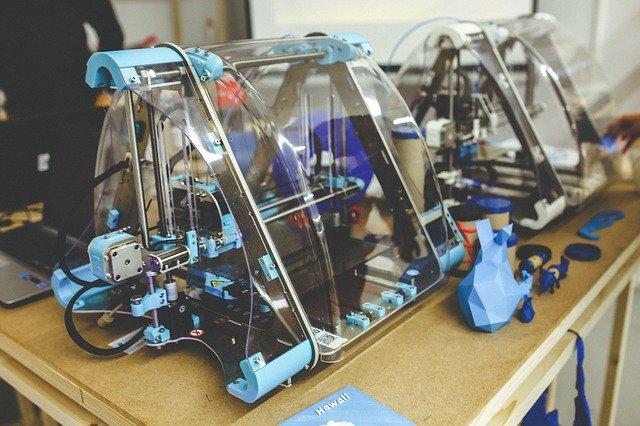What is Rapid prototyping?
Rapid prototyping can be defined as the series of methods used to rapidly fabricate a fully working model of an integral part or assemble with three-dimensional computer-assisted design data.
Other names for rapid prototyping are rapid fabrication or prototyping, 3D printing, additive or layered manufacturing, digital prototyping or fabrication, desktop fabrication or manufacturing.
3D printing is typically used in the area of manufacturing, where it has revolutionized the process of designing and manufacturing parts for use in a wide range of products.
Types of Rapid prototyping
There are about 5 different types of rapid prototyping. They are categorized based on the model used.
- Fused Deposition Modelling (FDM)
- Selective Laser Melting or Sintering (SLM or SLS)
- Digital Light Processing (DLP)
- Laminated Object Manufacturing (LOM)
- Binder Jetting
How does Rapid prototyping work?
Rapid prototyping makes use of computer-aided design (CAD) technology.
The program enables designers and manufacturers to construct designs that can be used to manufacture parts or complete assemblies.
Rapid prototyping works with the help of 3D printing machines and rapid prototyping software.
The 3D machine would read the design made with the CAD software and add up the liquid, powder, or sheet material to be used for the layered additive manufacturing to create a prototype of an already existing physical model.
3D printing, additive manufacturing, and rapid prototyping are interwoven.
As rapid prototyping is getting more popular, there are more areas this innovation is used, and application is getting broadened.
Some examples of rapid prototyping are diagrams, 3D printing, Wireframe, Feasibility, etc
Advantages of Rapid prototyping
There are a number of advantages of rapid prototyping over other methods.
- The Design is easy to be adjusted
First, rapid prototyping allows the designer and manufacturer to determine the end product at any stage in the process – including the prototyping itself!
This brings an increased level of control and precision to the process.
By being able to manipulate the design of the parts or assemblies in question, the designer can better ensure that the end result will meet the exact specifications that were sought out during the design process.
This means that faulty product designs can be avoided. And when they are eliminated, production times are kept to a minimum.
- Flexibility
Secondly, rapid prototyping can be applied to a wide range of material and assembly requirements.
The flexibility that it offers in terms of sizing and materials means that parts manufactured in accordance with a client’s request can be produced on a short timeline, thus saving both money and time.
- Cost-effectiveness
Rapid prototyping parts can be designed for low-cost assembly as well, which is especially useful in the case of small or unique components.
In the long run, this can have a significant impact on the bottom line.
- Effectiveness
Rapid prototyping saves time and money due to the considerable reduction in the number of trial and error mistakes made during the production process.
Often, by the time it comes to correcting a mistake, the manufacturer is already facing significant expenses related to waste disposal.
But by speeding up the process with rapid prototyping software, designers and manufacturers can cut down on costs and shorten the learning curve.
All in all, this type of software offers designers and manufacturers the opportunity to cut costs, shorten time to market, and increase profits.
- Efficiency
The combination of rapid prototyping software has the potential to make the entire product development process faster, cheaper, and more efficient, thus allowing for a more cost-efficient production process that will lead to a faster launch into the market.
Not only does this allow for quicker product introductions and rollouts, but it also results in greater levels of quality.
In the end, increased production and reliability could result in increased profitability.
So what should you look for in rapid prototyping software? First, look for speed. Next, look for a user-friendly interface.
Finally, look for easy setup and maintenance. If you have the right software, rapid prototyping could provide a great return on investment.

An entrepreneur, business administrator, investor, and publisher who has spent nearly two decades exploring how emerging tech, the internet, and innovation continue to redefine the way people live, work, and build success.
With a unique blend of insight and experience, BusinessPally won the Corporate Vision Magazine – Global Business Award.
I love sharing lessons, personal stories, and forward-thinking ideas that help entrepreneurs and professionals navigate the changing world of business with confidence and creativity.
